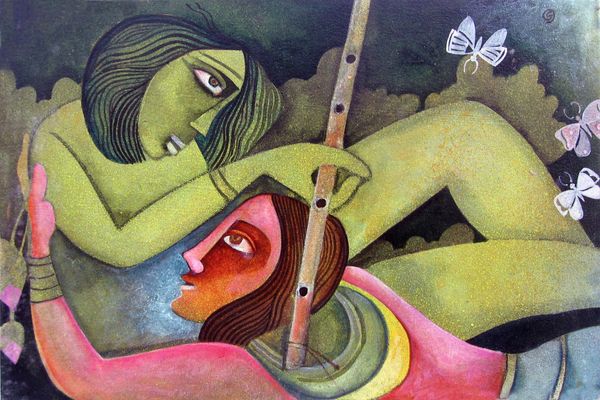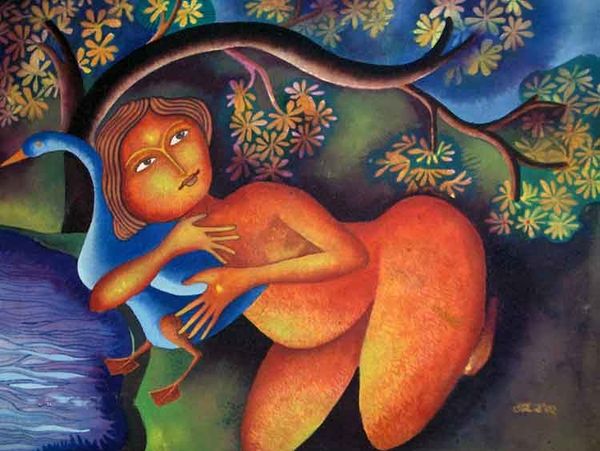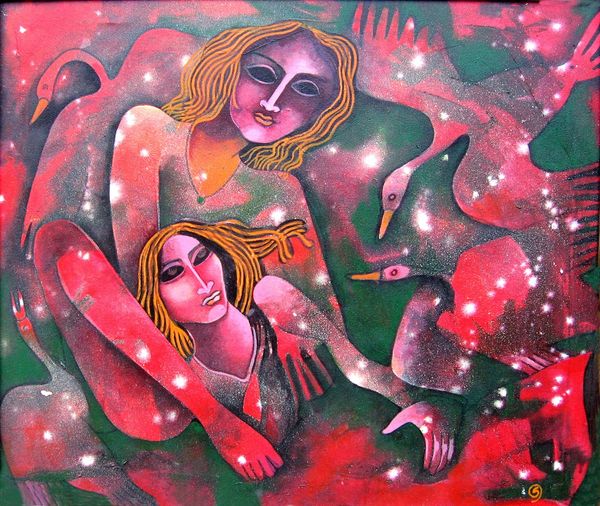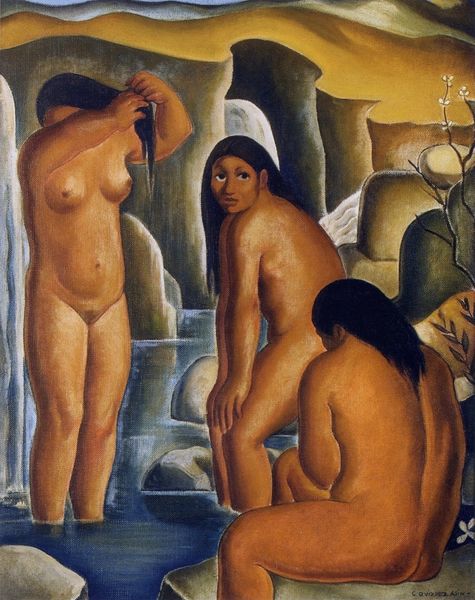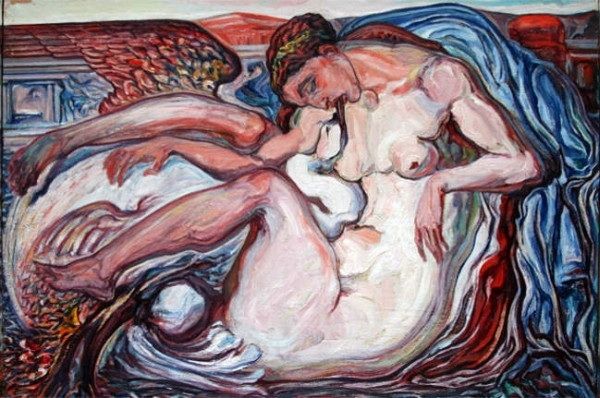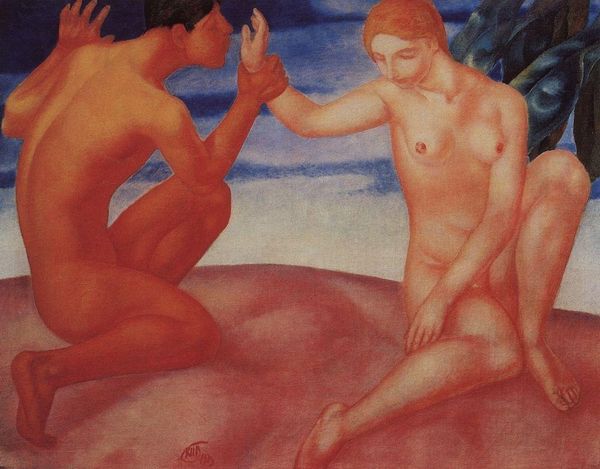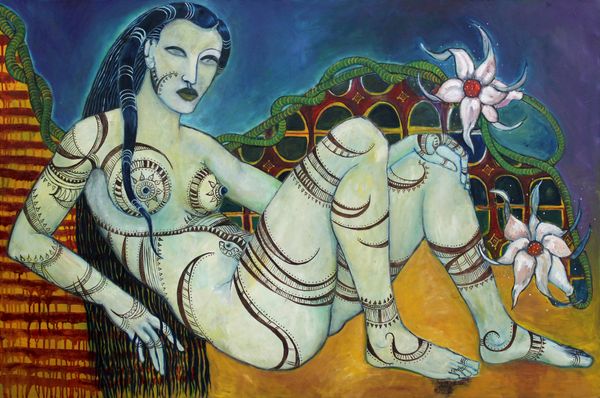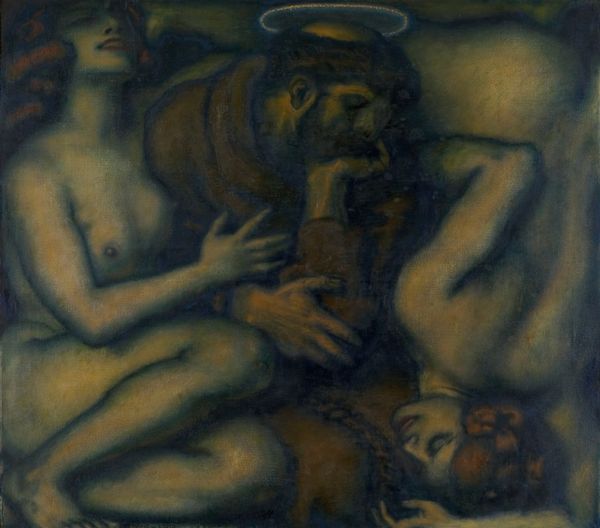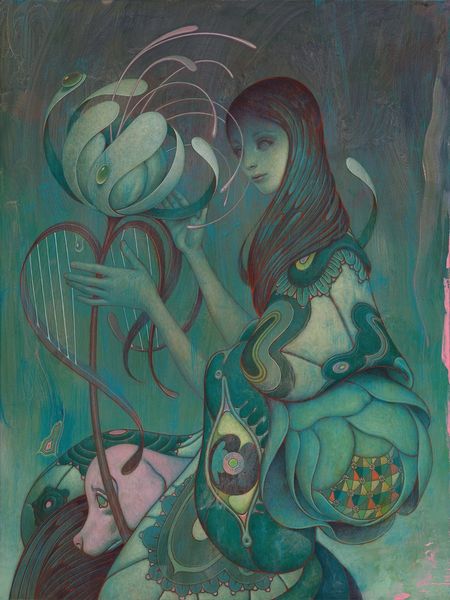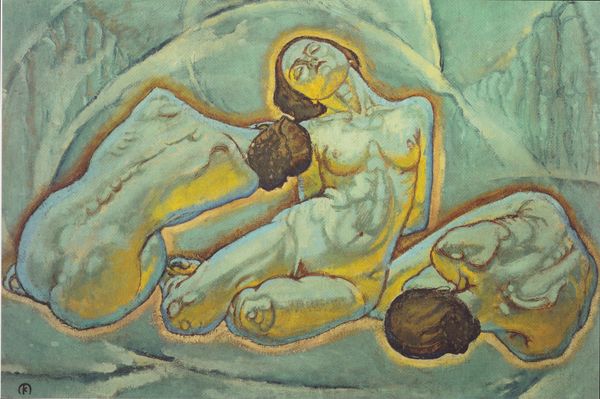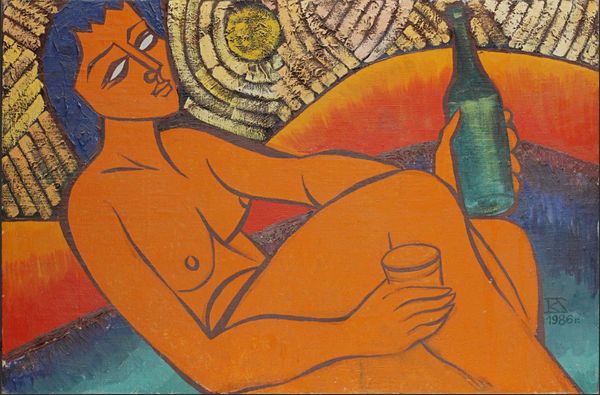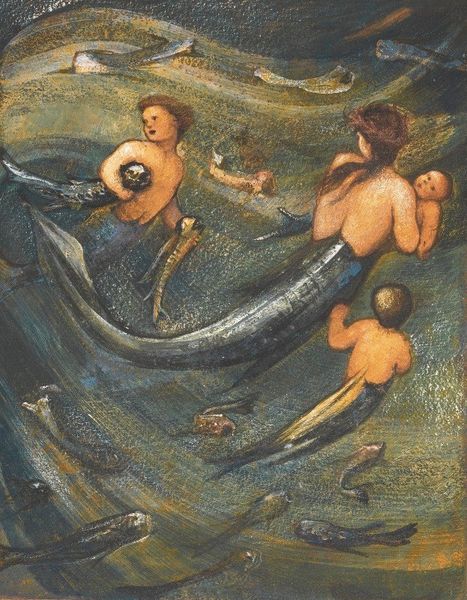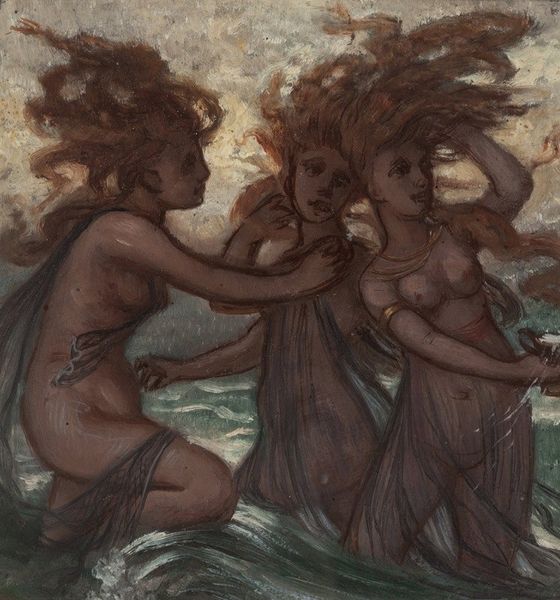
Dimensions: 121 x 182 cm
Copyright: Fair Use
Curator: Let's discuss "The Nose Flute," an oil on canvas by Filipino artist Botong Francisco, completed in 1955. This piece is a gorgeous example of genre painting blended with portraiture. Editor: Immediately striking is the artwork's intimate mood. The figures, bathed in warm tones, seem to exist within a private, almost ethereal space accentuated by those looping white lines that feel both smoke and musical notation. Curator: The subject matter hints at tradition, a kind of idealized depiction of indigenous Filipino culture. The man is playing the nose flute, a significant instrument in certain communities, while the woman beside him seems to listen, enfolded in the shared cloak, suggestive of community and interdependence. The piece romanticizes rural life and native heritage, inviting the viewer to contemplate the Philippines' rich cultural tapestry prior to colonialism's widespread influence. Editor: The interlocking figures create a unified mass, disrupted only by the clean diagonal of the flute and the flowing drape. Color choices are carefully calibrated, drawing attention to certain regions and obscuring other body parts into pure planes of visual interest. I am interested in those linear elements which resemble curls of smoke. Are these, perhaps, purely aesthetic and without representative symbolism? Curator: That's an interesting suggestion and also perhaps part of its power and how it engages its audience. We can appreciate how Francisco's visual language—drawing on Western academic conventions—appeals to viewers in different social and cultural settings. By centering the indigenous in the realm of fine art, Francisco simultaneously preserves a cultural narrative and opens avenues for discussions on cultural identity and postcolonial heritage within the context of modern Filipino art. Editor: Precisely. What appears outwardly conventional hides this engagement with more interesting concerns. In many ways, "The Nose Flute" captures this dichotomy by using simple forms in complicated relations. This gives the picture’s form an overall complexity that would seem simple in initial appreciation, making its depths harder to sound. Curator: Considering its nuanced exploration of identity and cultural narrative, "The Nose Flute" presents enduring, evocative questions for the present moment, don't you think? Editor: Indeed, that's why an examination of the forms helps amplify a better, firmer interpretation.
Comments
No comments
Be the first to comment and join the conversation on the ultimate creative platform.
